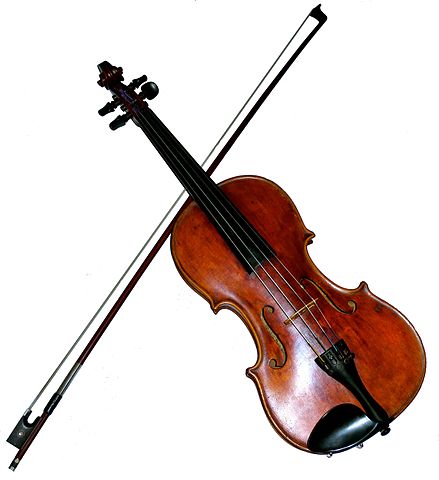Violin vs Electric Violin
The difference between a violin and an electric violin can be observed in features such as sound quality and sound production. Violin is a very important musical instrument in the string family, along with cello, viola, and double bass. It is made of wood pieces joined together by gluing and not nailing. The body of a violin is hollow like a guitar to work as a resonating sound box. It has four strings, which are made of animal gut, nylon, or steel, and these strings are wrapped around pegs on one end and connected to a tailpiece on the other side of the instrument. A violin is an integral part of a symphony, with many players holding violins under their chin and playing them with a long stick with a single string in another hand. Just like a guitar, violin also has an electric version. In this article, the differences between classical violin and electric violin will be highlighted.
Key Takeaways
- Traditional violin is more suited towards classical music, while electric violin is ideal for hip hop, jazz, country, and experimental music.
- Sound production in an acoustic violin comes from the hollow sound box, while there is very little sound coming out of the solid body of an electric violin and it needs to be amplified to be audible.
- Teachers and musicians in traditional circles prefer the classical violin, while musicians in the new music genres prefer the electric violin.
What is a Violin?
A violin is one of the most important string instruments with a very long history. It has a beautiful, soothing sound, and many people, even those who do not have an in-depth knowledge about music, love the violin sound. What you play is what you get in the case of a classical violin. There is nothing you can do to adjust the sound quality other than tuning the strings. However, it is the classical violin that is used with an orchestra. Many players who have been using classical violin find it difficult to adjust to an electric violin. They are also put off by the difference in sound quality. As such, electric violin is rarely used in classical music. There is a lot of difference in the sound coming out of a classical violin, whenever there is a movement of the violinist. This means that in a symphony where violinists are fixed at their places, it is alright, but in live performances, playing with an acoustic violin may be problematic.
What is an Electric Violin?
An electric violin is the electric counterpart of the classical violin. Violin is one musical instrument that is capable of producing rich emotions. This is why many believe that the melodious sound created by the hollow sound box and vibrations of the strings is not possible with an electric violin that has a solid body. In fact, electric violin produces very little sound of its own and the sound has to be amplified to be heard by people. One cannot play an electric violin in an orchestra. As for sound quality, though an electric violin sounds just like an ordinary violin, you feel the difference when the two of them are playing at the same time. And then you realize that they do not sound great when played together. As many professionals accept, an electric violin, no matter how much it tries, cannot produce the original sound of the acoustic violin. It is only contemporary classical music that goes well with electric violin. Genres like Jazz, hip hop, rock, country, and experimental music allow playing electric violin easily.
In terms of music quality, it is possible to add reverb and control the tone to improve the quality of music produced in the case of an electric violin. When it comes to the material, since there is no hollow sound box inside the body, there have been attempts to keep the weight down by using glass, carbon fibers, and Kevlar. Electric violins come in handy during live concerts.
What is the difference between Violin and Electric Violin?
- Music Genre:
- Traditional violin is more suited towards classical music.
- Electric violin is ideal for hip hop, jazz, country, and experimental music.
- Sound production:
- Sound comes from the hollow sound box of acoustic violin.
- There is very little sound coming out of the solid body of electric violin and it needs to be amplified to be audible.
- Sound quality:
- You get what you play in acoustic violin.
- In electric violin, one can improve the sound quality.
- Preferences:
- Teachers prefer to use the acoustic or the classical violin than the electric violin. That is because they want to teach the students how a true violin sounds and get them to understand the true feel of the traditional instrument. Musicians who are in the traditional circles also prefer the classical violin.
- Musicians in the new music genres prefer the electric violin.
- Price:
- Low priced violins – At the lower end of the price range, acoustic or classical violin is cheaper than an electric violin.
- Mid-price range violins – Both seem to have the same prices.
- High-end violins – When it comes to more expensive ones, classical violins are more expensive than electric violins simply because most of them are irreplaceable musical instruments.
